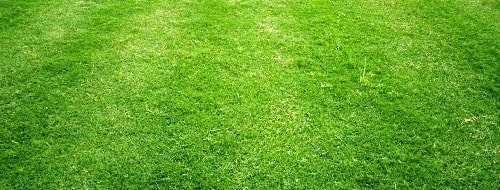When is grass cutting in Saint Paul?
Grass cutting in Saint Paul, Minnesota, typically begins in the spring and continues through the summer and into the early fall. The specific timing for grass cutting depends on various factors, including the climate and weather conditions in the area, as well as the growth rate of the grass. Additionally, consider the specific type of grass in your lawn, as different grass varieties have varying growth rates and maintenance requirements.
Monitoring your lawn’s condition and adjusting your mowing schedule accordingly will help you maintain a healthy and attractive lawn throughout the growing season in Saint Paul.Here’s a general guideline for the grass-cutting season in Saint Paul:
- Spring (April to May): Grass cutting in Saint Paul typically starts in late April to early May as temperatures begin to rise, and the grass starts to grow more vigorously. This is when you’ll need to start mowing your lawn regularly.
- Summer (June to August): Throughout the summer months, which can extend from June through August, grass growth is usually at its peak. Depending on factors like rainfall and temperature, you may need to mow your lawn every one to two weeks during this period.
- Early Fall (September to early October): As the summer season transitions into early fall, grass growth may slow down slightly. You may still need to mow the lawn, but the frequency may decrease compared to the peak summer months.
- Late Fall (Late October to November): Towards the end of the fall season and as temperatures drop in late October and November, grass growth typically slows considerably. You’ll likely mow less frequently during this time.
- Winter (December to March): In the winter months, when the ground is frozen or covered with snow, you do not need to mow your lawn.

It’s important to adjust your mowing schedule based on the growth rate of your grass and the desired height you want to maintain. Avoid cutting more than one-third of the grass blade’s height at a time, as excessively cutting the grass can stress it and leave it vulnerable to pests and diseases.
What season is grass planting in Saint Paul?
In Saint Paul, Minnesota, the best time for grass planting, whether you’re seeding a new lawn or overseeding an existing one, is typically during the fall season. Fall offers several advantages for grass planting in this region:
- Cooler Temperatures: Fall provides cooler and more stable temperatures compared to the hot summer months. Cool-season grasses, which are commonly grown in northern climates like Saint Paul, thrive in these conditions.
- Reduced Weed Competition: Weeds are generally less active in the fall, which means there’s less competition for resources when you’re establishing new grass. This can lead to better germination and establishment.
- Sufficient Moisture: Fall often brings more consistent rainfall, reducing the need for frequent watering. This helps ensure that the newly planted grass seeds receive the moisture they need for healthy growth.
- Reduced Heat Stress: Planting in the fall minimizes the risk of heat stress on young grass seedlings, which can occur during hot summer weather.
Here’s a recommended timeline for grass planting in Saint Paul:
- Late Summer to Early Fall (August to Early September): This is the ideal time to seed cool-season grasses such as Kentucky bluegrass, fine fescue, and perennial ryegrass. The soil is still warm from the summer, and there’s typically enough time for the grass to establish itself before winter dormancy.
- Early to Mid-Fall (Late September to October): While it’s still possible to plant grass during this period, aim to do so earlier in the season to give the grass more time to establish strong roots before winter.
Keep in mind that soil preparation is crucial for successful grass planting. This includes activities like soil testing, weed removal, and proper soil amendment if necessary. Follow the recommended seeding rates for your chosen grass type, and be sure to keep the newly seeded area consistently moist until the grass becomes established.

If you’re uncertain about the specific grass type to plant or the best practices for your lawn, consider consulting with a local nursery or landscaping professional in Saint Paul for personalized guidance and recommendations based on your lawn’s unique needs and conditions.
How much does it cost to cut grass in Saint Paul?
The cost of grass cutting services in Saint Paul, Minnesota, can vary widely depending on several factors, including the size of your lawn, the frequency of service, the condition of your lawn, and the specific lawn care provider you choose. Here are some general price ranges to give you an idea of what to expect:
Lawn Size: The most significant factor influencing the cost of grass cutting is the size of your lawn. Lawn care providers often charge based on the square footage of the lawn. Smaller lawns typically cost less to maintain than larger ones.
Frequency of Service: The frequency of lawn cutting can impact the overall cost. Some homeowners opt for weekly or bi-weekly mowing services, while others may choose a less frequent schedule. More frequent service typically costs more.
Condition of Lawn: If your lawn is overgrown, uneven, or requires additional services like edging, trimming, or leaf removal, the cost may be higher to account for the extra work.
Location: The cost of lawn cutting services can vary by neighborhood within Saint Paul. Urban areas or neighborhoods with higher living costs may have higher rates than suburban or rural areas.
Lawn Care Provider: Different lawn care companies or individual contractors may offer different pricing structures. Prices can also vary based on the level of service, such as basic mowing versus a comprehensive lawn care package.
Additional Services: Some lawn care providers offer additional services like fertilization, weed control, aeration, and pest control. These services can add to the overall cost.
Seasonal Variations: The time of year can also affect pricing. Spring and summer tend to be the peak seasons for lawn care services, and prices may be higher during these times.
The cost of basic lawn cutting services in Saint Paul could range from approximately $30 to $60 or more per visit for an average-sized residential lawn. However, prices may have changed since then, so it’s advisable to obtain quotes from local lawn care providers to get a more accurate estimate based on your specific lawn and needs.
It’s also important to consider the reputation and reliability of the lawn care provider, as well as any insurance or licensing requirements in your area, when making your choice. Additionally, ask for recommendations from neighbors or friends who have used lawn care services in your vicinity to find reliable providers at competitive prices.
Lawn fertilization in Saint Paul
Lawn fertilization in Saint Paul, Minnesota, is an essential aspect of lawn care to maintain a healthy and vibrant lawn. The specific fertilization schedule and practices can vary based on the type of grass you have and local weather conditions, but here are some general guidelines for lawn fertilization in Saint Paul:
- Cool-Season Grasses: Saint Paul and the surrounding regions of Minnesota typically have cool-season grasses, such as Kentucky bluegrass, fine fescue, and perennial ryegrass. These grasses benefit from a specific fertilization schedule.
- Timing:
- Early Spring (April – May): Apply a slow-release, balanced fertilizer in early spring as the grass begins to green up. This provides essential nutrients for early-season growth.
- Late Spring (May – June): Apply a second round of fertilizer in late spring, typically around late May to early June. This promotes continued growth and overall lawn health.
- Late Summer (August – September): Apply another round of fertilizer in late summer or early fall, usually around August to September. This helps the grass recover from summer stress and prepares it for the cooler fall weather.
- Optional Fall Application (October – November): Some homeowners choose to apply a winterizing or fall fertilizer in late fall, typically in October or November. This provides nutrients for fall and early winter root development and prepares the lawn for winter dormancy.
- Soil Test: Consider conducting a soil test to determine your lawn’s specific nutrient needs. This will help you choose the right type of fertilizer and determine the appropriate application rates.
- Fertilizer Type: Choose a high-quality, slow-release fertilizer with a balanced N-P-K (nitrogen, phosphorus, and potassium) ratio suitable for your lawn type. Slow-release fertilizers provide nutrients over an extended period and reduce the risk of nutrient runoff.
- Proper Application: Follow the manufacturer’s instructions for the fertilizer you choose, including the recommended application rates. Use a spreader to ensure even distribution.
- Watering: After fertilization, water your lawn to help activate the fertilizer and carry nutrients into the root zone. Water deeply and infrequently to encourage deep root growth.
- Environmental Considerations: Be mindful of local regulations regarding fertilizer use, especially near water bodies, as excess fertilizer can contribute to water pollution. Avoid applying fertilizer near storm drains or waterways.
- Lawn Mowing: Keep your mower blades sharp and follow proper mowing practices to minimize stress on the grass and maximize nutrient uptake.
- Aeration: Consider lawn aeration in the fall to improve nutrient absorption and soil aeration.
It’s important to tailor your fertilization program to your specific lawn’s needs, so consider factors like your grass type, soil conditions, and any previous soil test results. If you have questions or need further guidance, consult with a local nursery or lawn care professional in Saint Paul for personalized recommendations. Fertilizing the lawn in Saint Paul >>





